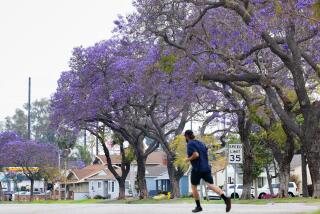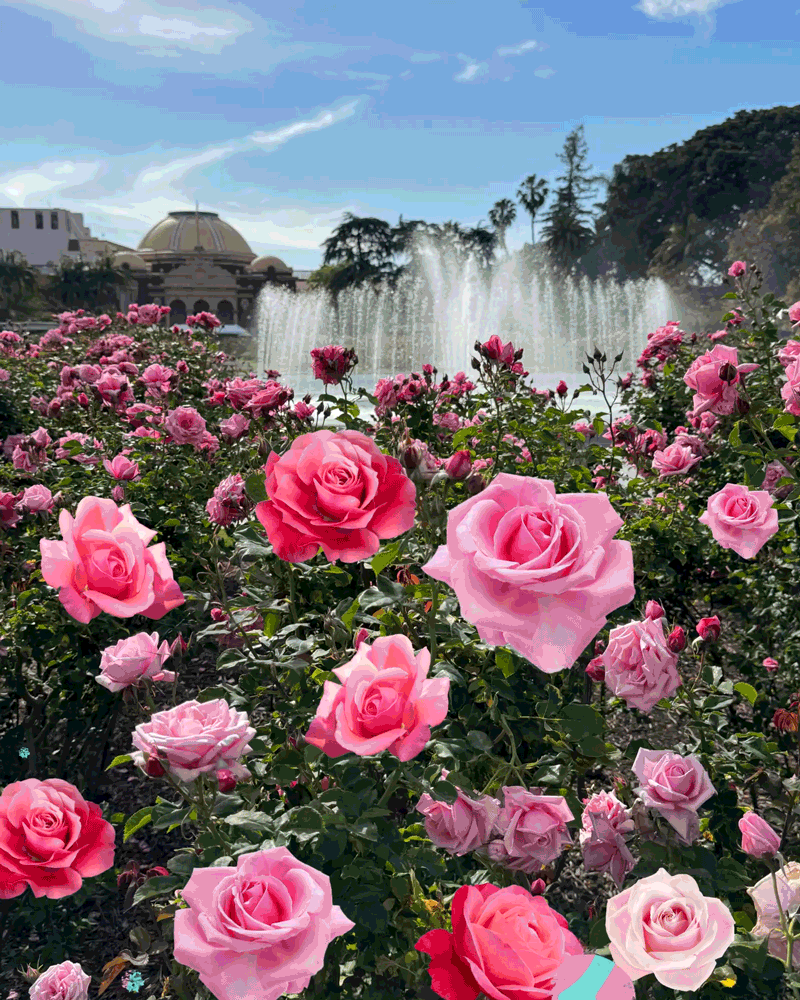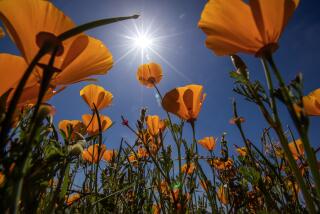CHOICE CAMELLIAS : In this camellia capital of the world, spectacular displays are on hand to guide us in choosing plants for our gardens. Of the nine annual major Southland shows, the biggest and best are yet to come
By far, the best place to see camellias in bloom is at a camellia show. All the varieties are labeled, so if a particular blossom were to catch your eye, you could learn the plant’s name and perhaps order one for your garden. Camellia hobbyists manage to bring a great assortment of camellias early and late varieties--to bloom at the same time, so that all the plants can be shown simultaneously. Otherwise, you’d need to make several trips to a nursery or arboretum over a period of several months to see as many.
Southern California is the camellia capital of the world. There are no fewer than nine major shows sponsored by the Southern California Camellia Council held yearly. Though some of them have already been held, the biggest and best shows are yet to come. (A listing of this month’s camellia shows can be found on Page 24.) Shows occurring earlier in the year rely on a special chemical called gibberellic acid that forces camel- lias buds to develop swiftly and bloom early.
The biggest show this month--at Descanso Gardens--is pictured on these pages. At the Descanso show you can see several thousand individual blossoms competing for honors. If you don’t get your fill there, the show coincides with the peak bloom of the 30-acre camellia forest at Descanso. Entries for this show come from as far away as San Diego and Sacramento.
The individual camellias pictured here are some of the last year’s prize winners. It’s important to realize that these particular varieties--Ville de Nantes, Nuccio’s Gem and others-- are not necessarily the best varieties, though they tend to be the favorites of camellia hobbyists and camellia-show winners. These varieties received ribbons because they were grown more perfectly than their competitors--without blemishes, deformed petals or other unattractive characteristics. In fact, they may not be good choices for the home garden.
Many camellias seen in shows produce spectacular flowers, but the blooms may be few in number. The plants can have other faults as well. To determine which of the several hundred show varieties are good garden plants, simply ask questions. At a camellia show, there are plenty of experts who can tell you whether the shrub that goes with the flower that you’re admiring is as pretty as the bloom. In general, the japonica camellias make the best shrubs, while the reticulata or reticulata hybrid camellias tend to open more--sometimes even appearing rangy--though that might be the sought-after look for an informal garden.
If you should find a camellia that you want for your garden, note that February and March are fine times to plant. Camellias begin their growing season right after they flower, and if they have been planted properly, they will establish themselves rapidly in the early spring. The procedure for planting a camellia (or an azalea) is somewhat different than that for other shrubs, so we have included some up-to-date advice on Page 24.
Camellias in general are excellent container plants, and many hobbyists who show camellias often grow them in containers so that the plants can be moved to a protected spot in the garden when the flowers begin to unfurl.
Flowers at shows usually are pro- duced on branches that have had the rest of the flowers removed as buds, which enables the remaining blossoms to grow a bit larger. Flowers are judged for texture, color, form and freshness.
Would you like to participate in a camellia show--perhaps even win a ribbon? It is not difficult, and there is a special novice division for anyone who has never before won a prize. Simply arrive at the show in the early morning of the first day. Entries usually are accepted (and encouraged) from 7 or 7:30 a.m. until judging begins around 10 a.m. To cut a camellia for a show, leave less than one inch of stem and no more than two leaves. Make sure there are no bruised or broken petals and no spots or other blemishes. Then cross your fingers and hope.
More to Read
Sign up for The Wild
We’ll help you find the best places to hike, bike and run, as well as the perfect silent spots for meditation and yoga.
You may occasionally receive promotional content from the Los Angeles Times.






